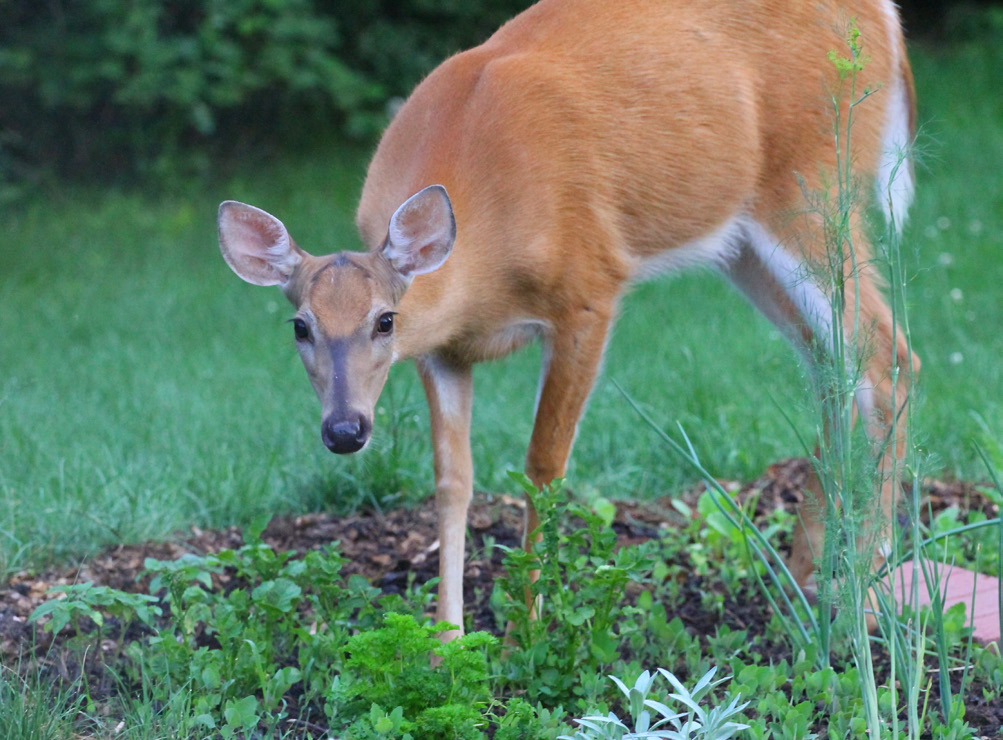Master Gardener Spotlight: Oh, DEER, They’re in the Garden Again

One barrier is the overall winner when evaluating options to protect vegetable gardens from four-legged pests. A fence, at least seven feet tall, with a gate that can be closed, is the best way to exclude deer from the garden.
The issue is that not everyone wants to look at a seven-foot fence or pay for one. Similar to other Integrated Pest Management practices, numerous other strategies can be implemented in coordination with one another to reduce deer pressure.
One tactic to try is fear. The use of frightening devices is a strong deterrent. Keep in mind that deer can become accustomed to these devices. The best way to reduce this from happening is to change the location and or device so they do not become familiar. Motion-activated lights, water sprayers, loud noises and flashing lights will deter deer. Be aware that motion-activated devices are not deer specific; anything, including humans and pets, could set them off. If you live in an urban setting, some of these may cause problems with neighbors. Remember, deer feed at night when most individuals would rather sleep than have a light show.
The cutest and most loved form of frightening device is the family dog. Their scent and bark work in tandem to prevent deer from becoming too comfortable in an area.
Repellents are another strategy in the toolbox of deer deterrents. Repellents use both taste and smell to deter feeding. When using repellents, the goal should be a reduction, not elimination. There are two major points to recognize when using repellents. First, they must be AdobeStockreapplied repeatedly and within specific intervals to work effectively. Their application will consume a significant amount of time. The other point is that they will fail over time. Repellents should be alternated throughout the growing season; deer will become familiar with the scent and taste. Three common ingredients in commercial repellents are fungicides, putrescent eggs, and pigs’ blood. These applications may work well in some environments and be less desirable in others.

Photo: AdobeStock
When it comes to protecting a garden from deer, a gardener should employ a combination of tools and only rely on one strategy if a well-built fence is a part of the picture. Exclusion, fear, and repellents are some tools that can help reduce deer feeding issues. Multiple tactics modified throughout the growing season will keep deer from becoming too comfortable at the salad bar, otherwise known as your vegetable garden.
Sarah Eilers is the MSU Extension Master Gardener Coordinator.
